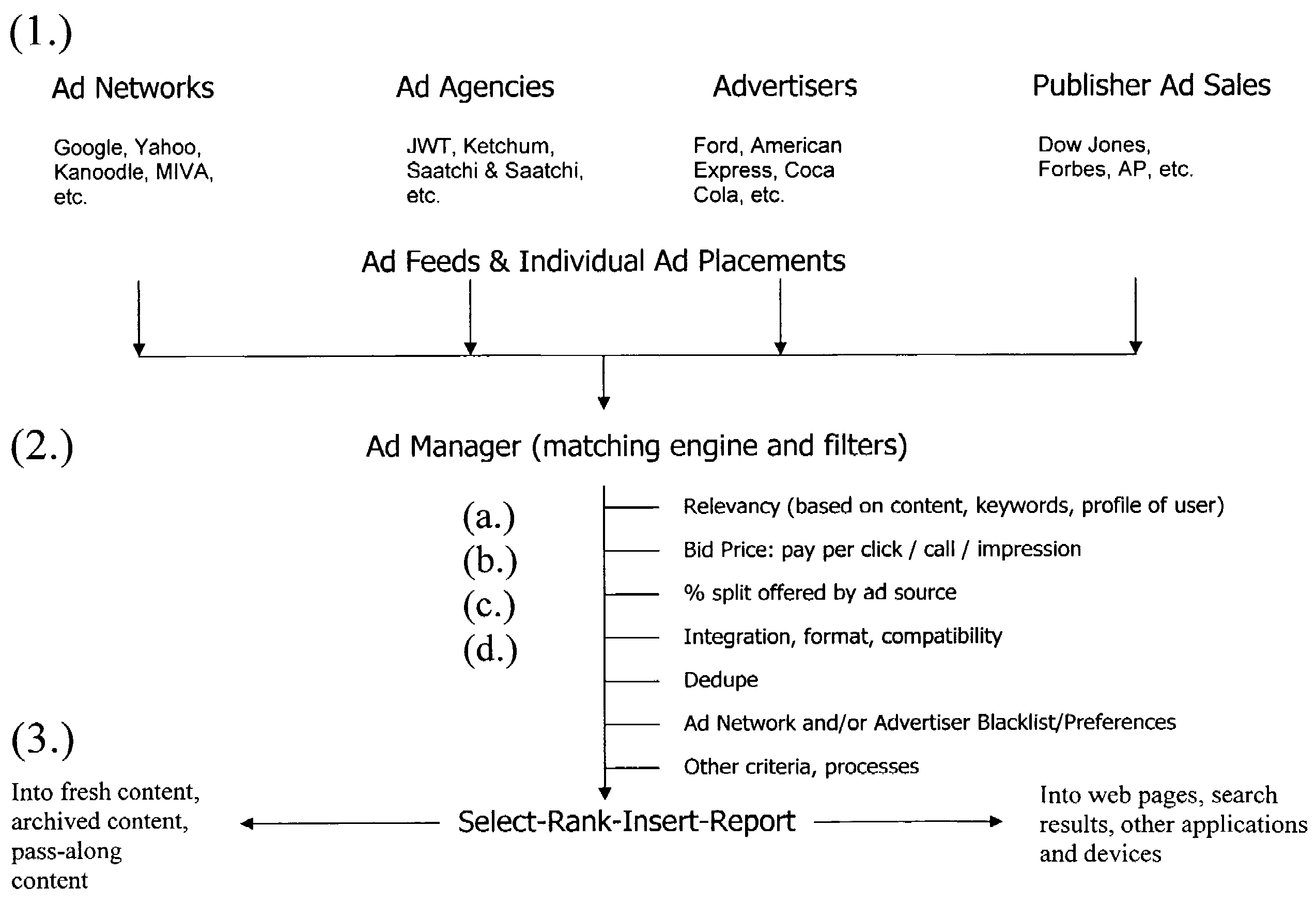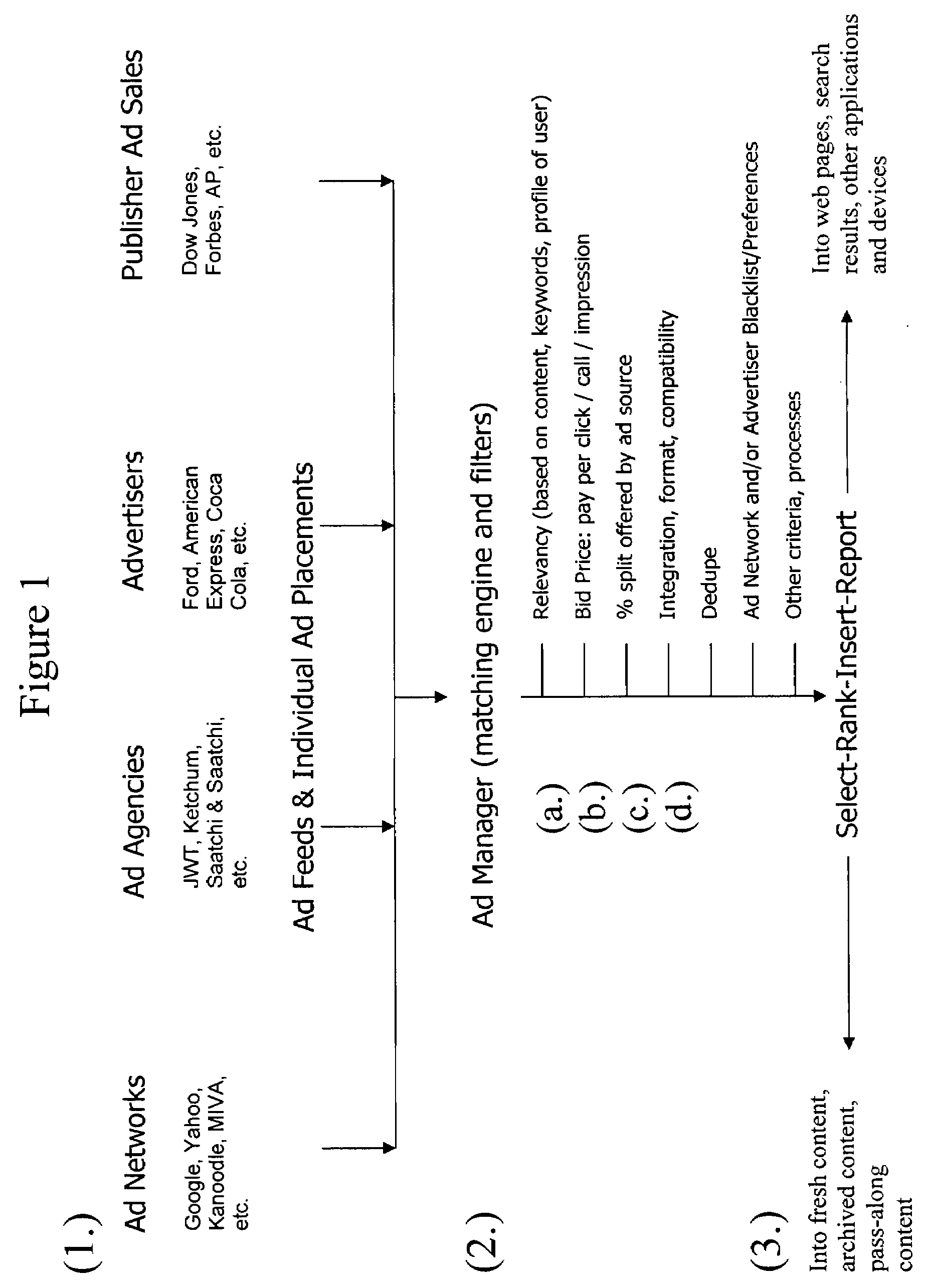Metalevel electronic marketplace for advertising
a technology of electronic marketplace and advertising, applied in the field of electronic marketplace for advertising, can solve the problem that ads often have a very limited “shelf life", and achieve the effect of avoiding delay in content delivery
- Summary
- Abstract
- Description
- Claims
- Application Information
AI Technical Summary
Benefits of technology
Problems solved by technology
Method used
Image
Examples
Embodiment Construction
[0021]Step (1.) of FIG. 1 depicts the sourcing of advertisements. This is the aggregation step that ensures that the content publisher has access to the widest possible pool of advertisements available (and actionable) in a given moment, for a given context or application (web page, article, search query), regardless of whether the source is an ad network, an ad agency, the publisher's ad sales team, or an individual advertiser. The system provides a mechanism to receive unlimited ads for possible inclusion in the targeted real estate.
[0022]The system collects ads at the time the ads need to be displayed to a user, because of the brief “shelf life” of ads as previously described. The aggregator makes an electronic request to each ad source, either in sequence or in parallel, using the existing query mechanism specific to that ad source. For example, if an ad network offers ads to publishers via an XML query sent over HTTP, the aggregator uses a query of this form to fetch ads from t...
PUM
 Login to View More
Login to View More Abstract
Description
Claims
Application Information
 Login to View More
Login to View More - Generate Ideas
- Intellectual Property
- Life Sciences
- Materials
- Tech Scout
- Unparalleled Data Quality
- Higher Quality Content
- 60% Fewer Hallucinations
Browse by: Latest US Patents, China's latest patents, Technical Efficacy Thesaurus, Application Domain, Technology Topic, Popular Technical Reports.
© 2025 PatSnap. All rights reserved.Legal|Privacy policy|Modern Slavery Act Transparency Statement|Sitemap|About US| Contact US: help@patsnap.com


